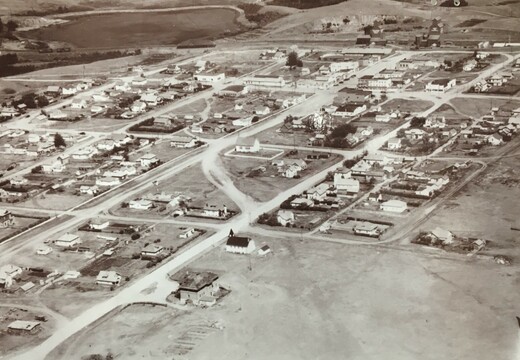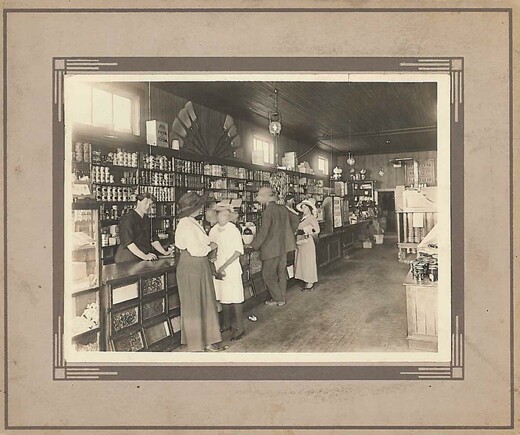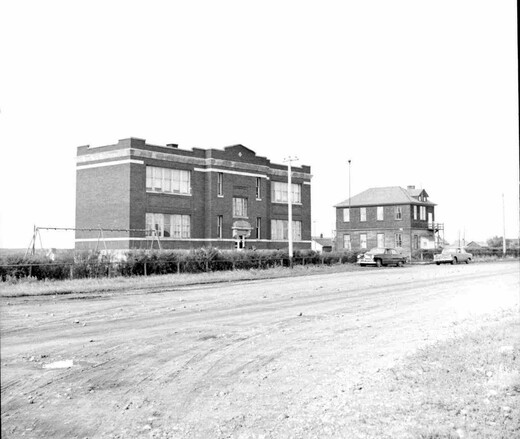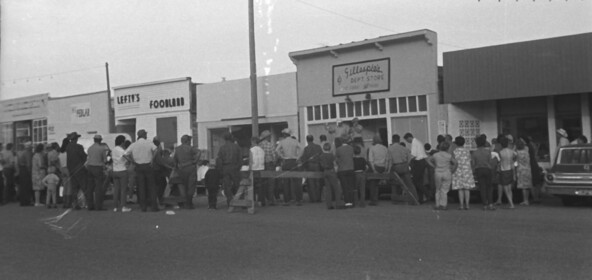
The Town of Hardisty was named after Senator Richard Hardisty. It began in 1906 as a Hamlet, and officially became a Town in 1911. The first people we know of to live in the Battle River Valley were the First Nations Peoples. This country was the wintering grounds for thousands of buffalo, moose, elk and deer, which attracted these people to the area. The Town of Hardisty owes its existence to the CPR. About 1904 the surveyors began to survey the railroad from the east and decided to locate a divisional point at Hardisty because of the good water supply from the river. Although this was a trading centre as early as 1904, it became a boomtown by 1906, spawned by the influx of workers who were building the CPR. By the fall of 1906 the rail line reached Hardisty from Daysland. Then began the task of building the bridge, a task which took about three (3) years. Settlers also began arriving in large numbers. During 1906 to 1907, Hardisty was referred to as a tent town because people lived in tents until lumber could be hauled in. Business places sprang up overnight and, as with many towns, they were built along the railroad track.
Excepts from "Those Years from Rail to Oil; A History of Hardisty and Surrounding Area," © Copyright 1981, Hardisty History Book Committee.

Listen to Hardisty Growing
The noise of the builders in heard all around.From daylight to darkness, their hammers resound.The workmen are busy, the town's growing fast And the beautiful part is, it's growing to last.
Listen to Hardisty Growing - The Hardisty Enterprise of February 13, 1908
And, grow it did, to serve the needs of the ranchers, the farmers and the townspeople. The rail lines brought to all the means to travel quickly, communicate regularly, obtain supplies more cheaply and to obtain the little luxuries that would improve the quality of life. The ownership of businesses did change; homesteaders who could not adapt to the harsh conditions sold to new farmers who could. Services to all gradually improved until the great Depression struck bringing with it a decrease of business from near disaster in the farming and manufacturing community. Not until World War II was over did the area begin to prosper again and then with great changes brought about by a need to be more energy efficient. Gone were the teams of horses and the need for large numbers of men to drive them in favor of larger and larger tractors and trucks. Next went the faithful old steamers and the need for a roundhouse, a coal dock, or a water tower, or large train crews on hand to man even a pusher. For a time it appeared that the town would follow the downward path of many another town on the prairies when one of its main industries was lost. But oil, one of the causes of the drastic changes of the late 1940's, became of great value to the area in providing employment, plants and revenue to land owners and our government. Little did our forefathers realize that beneath our whole province was another resource in addition to our good soil that would bring us an unknown prosperity and security unknown to any other land.

History of Hardisty School
The first school classes in the hamlet known as Hardisty were held in the Arcade building, commencing in 1907. With the influx of new settlers and railroad workers with their families, the Arcade was soon overcrowded, so the upstairs of Sullivan's Hall was used. In 1909 a two-room frame building was constructed. A long steep flight of open stairs, built on the outside of the building, gave access to the upper room. By today's standards, this building would be considered a prime fire trap.
The town continued to grow rapidly and it was soon apparent that the two room school was not adequate, so plans for a larger building were made. In 1914, the new structure opened its four classrooms and accommodated children in grades 1 to 12. Besides the four classrooms, there were two play rooms plus a janitor's room and furnace room. There was no plumbing.
In 1947, many of the rural schools in the surrounding districts were closed, chiefly due to a teacher shortage. The children from these districts were brought by bus to Hardisty, the central point. They were now considered as belonging to the Killam School Division.
It was necessary to provide more classroom space for all these pupils so the old two-room school, which had been condemned years earlier, was reopened. Still more space was required so Crickledale, a rural school, was hauled in to Hardisty and used as a classroom. Children from rural districts of Strong, Velva, Fullview, Silver Lane, Hazelwood, Melbrae and Beehive, as well as Thelma and Rosyth from the Provost school district, all attended Hardisty beginning in September 1947. About 1952, Arnold was also closed and brought to Hardisty.
It was a far from ideal situation for all concerned. In the fall of 1952, the old two-room school housed 82 students and two teachers. Thirty-nine students in grades 3 and 6 occupied the lower room, while forty-three students in grades 4 and 5 were crowded into the upper room, which had been designed for a maximum of 25 students.
But better conditions were on the way. By 1955 the four-room brick school had a new wing. In the new wing there were five classrooms, a library, a staff room and a gymnasium, complete with a stage. Besides this, the older part of the building was renovated. New lighting and fresh decoration made the classrooms more attractive. Indoor plumbing and a better water supply assured students and teachers of better creature comforts. The school was hooked up to the town water and sewage systems, a much appreciated service. The old water system could not supply enough drinking water for so many children and the fountains were often out of order, while the outdoor plumbing left much to be desired.
When the renovations and new wing were complete, the school was renamed. It became the Allan Johnstone School, named in honor of Hardisty's Mayor of long standing.
By 1960, the number of students had reached more than 250. The old Crickledale school was replaced with a modern portable classroom. Space was still a problem; also it was realized that a small school could not offer its high school students the variety of courses available at larger centers. Hardisty School joined the Killam School Division and in the fall of 1961; students in grades 10 to 12 were bused daily to Sedgewick Central High, a practice which continues today.
The Crickledale school, moved to another location, is now the Anglican Church Hall. The old two-room school was demolished several years ago to make more playground space available.

